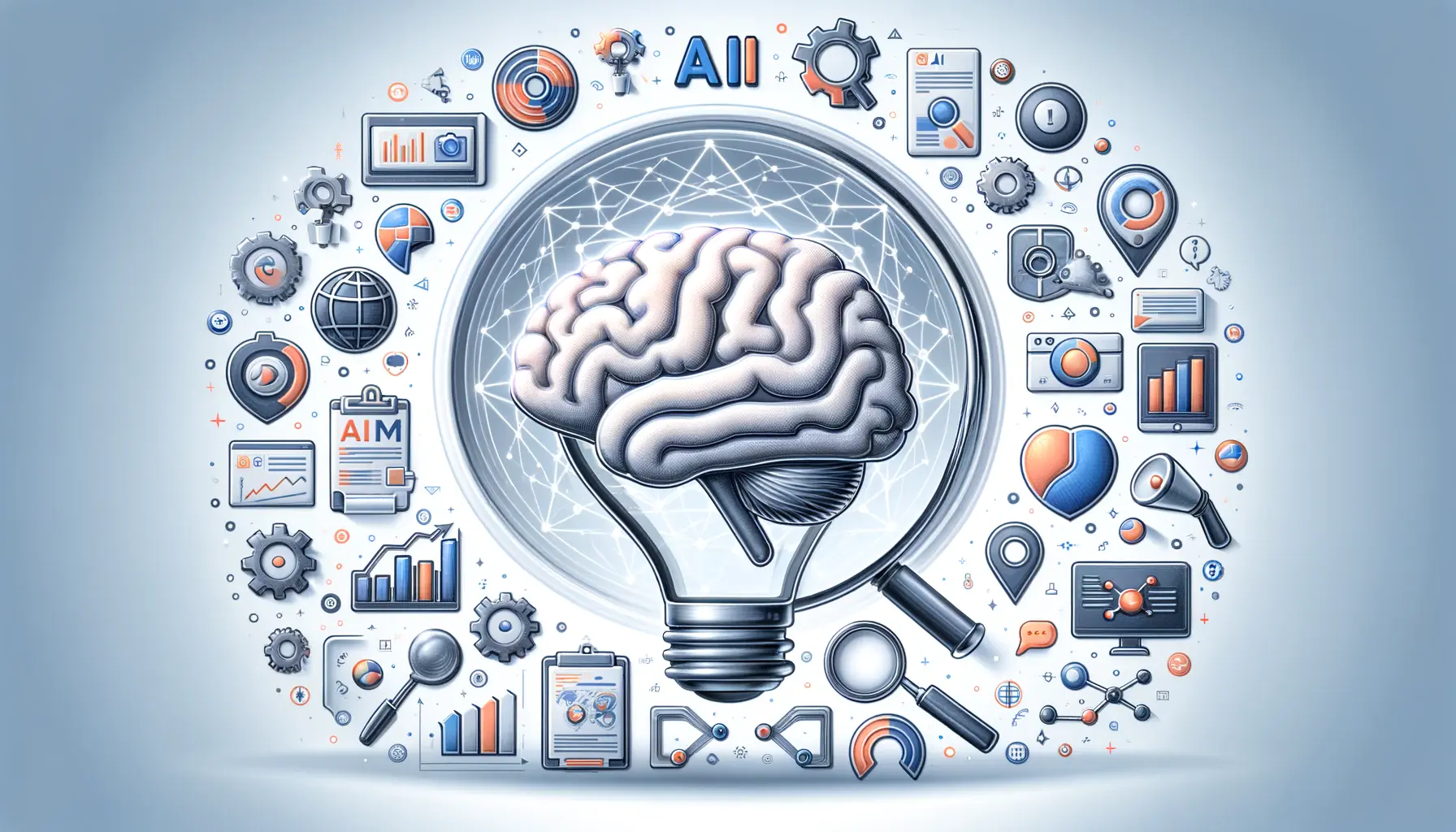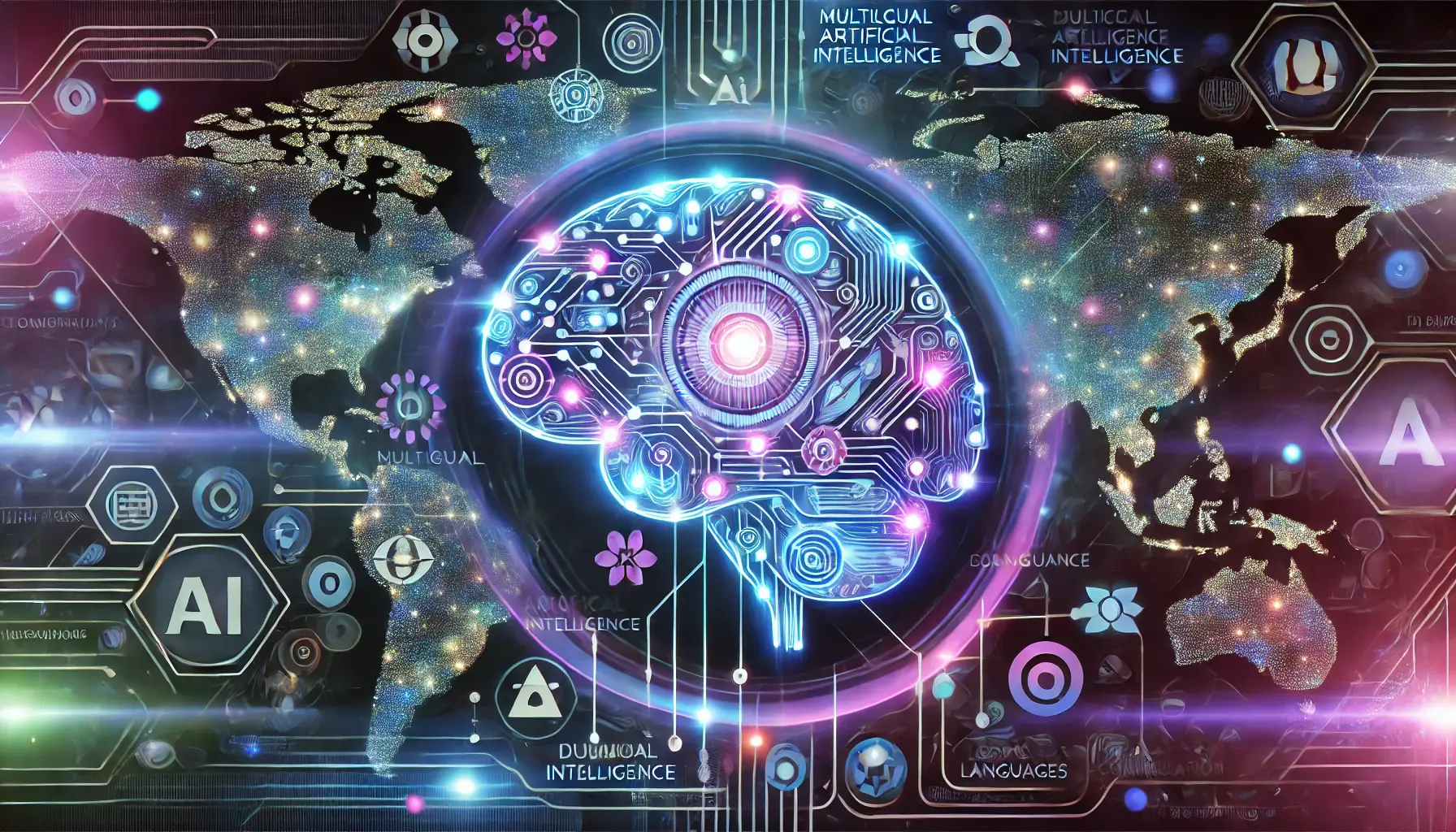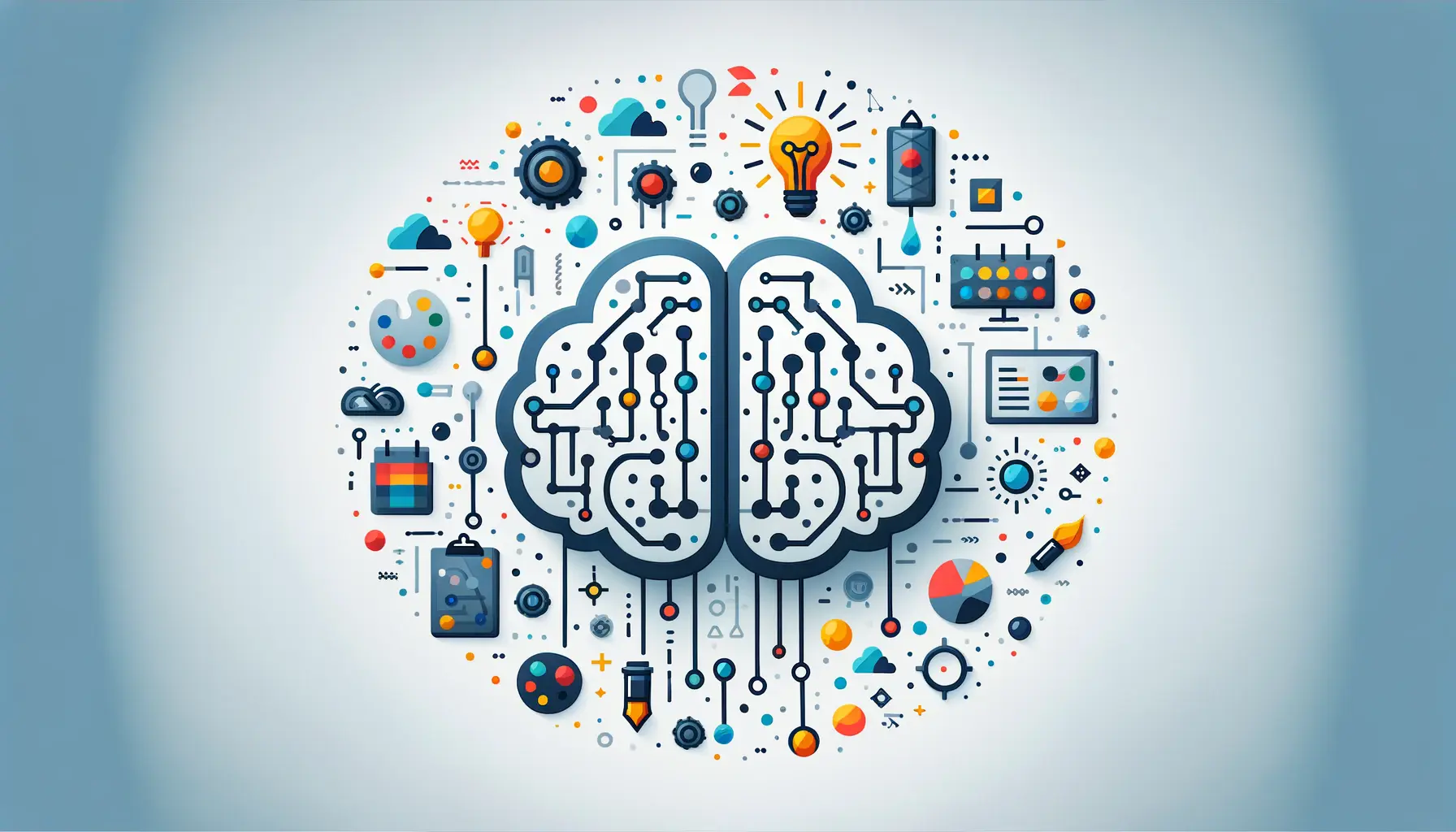The digital landscape is ever-evolving, with search engine optimization (SEO) at its core, shaping how content is created, discovered, and consumed.
Google’s Bard, an advanced AI-driven tool, is setting a new benchmark in this dynamic environment.
This innovative technology is not just another addition to Google’s arsenal; it’s a transformative force poised to redefine SEO strategies and content creation processes.
At the intersection of artificial intelligence and search engine optimization, Bard emerges as a pivotal player.
Its integration into the SEO ecosystem signals a shift towards more intelligent, responsive, and user-focused content creation.
This tool leverages Google’s vast data repositories and machine learning capabilities to offer insights and content optimization strategies that were previously unimaginable.
- The Role of Google Bard in Modern SEO
- Keyword Strategy Optimization with Bard
- Improving User Experience and Engagement
- Content Optimization for Global Audiences
- Enhancing Content Strategy with Data Insights
- Future of AI in Content Creation and SEO
- Integrating Bard into Content Workflow
- The Dawn of a New Era in SEO and Content Creation
- FAQs on Google Bard and SEO
The Role of Google Bard in Modern SEO
Google Bard’s introduction to the SEO landscape is akin to opening a new chapter in digital marketing.
Its capabilities extend beyond mere keyword analysis, delving into the realm of content relevance, quality, and engagement.
Bard’s AI-driven insights enable content creators to craft materials that resonate more deeply with their target audience, ensuring that the content not only ranks well but also fulfills user intent and expectations.
The tool’s impact on SEO is multifaceted, influencing everything from keyword strategy to content personalization.
By analyzing and understanding the nuances of user queries, Bard assists in creating content that addresses specific needs, questions, and interests.
This precision in content creation not only enhances user experience but also boosts the content’s visibility and effectiveness in search engine results pages (SERPs).
Enhancing Content Relevance and Quality
One of Bard’s standout features is its ability to enhance content relevance and quality.
By leveraging Google’s sophisticated algorithms and vast data sets, Bard provides recommendations for content optimization that aligns closely with search intent.
This ensures that the content not only attracts the right audience but also engages them effectively, leading to better retention and conversion rates.
Furthermore, Bard’s insights into user behavior and preferences enable content creators to tailor their materials more precisely.
This level of customization was previously challenging to achieve at scale but is now within reach, thanks to Bard’s advanced AI capabilities.
The result is content that not only ranks well but also delivers value, fostering a stronger connection between brands and their audiences.
Bard’s integration into SEO strategies marks a significant leap towards more intelligent, user-centric content creation, setting a new standard for digital excellence.
Keyword Strategy Optimization with Bard
Google Bard’s influence extends into the realm of keyword strategy, revolutionizing how keywords are researched, selected, and implemented within content.
This AI tool goes beyond traditional keyword research methods, offering a deeper understanding of how specific keywords can impact overall SEO performance.
By analyzing search trends, user intent, and competitive landscapes, Bard provides content creators with a comprehensive keyword strategy that’s both effective and efficient.
This not only improves the content’s search engine visibility but also ensures it meets the users’ needs more accurately.
Identifying High-Value Keywords
Bard’s advanced algorithms excel in identifying high-value keywords that are most likely to drive traffic and engagement.
These are not just high-volume keywords but those with a strong user intent behind them.
Bard helps in uncovering these gems, which might otherwise be overlooked in traditional keyword research.
- Long-tail Keywords: Bard’s ability to analyze and suggest long-tail keywords offers a significant advantage. These keywords, often more specific and less competitive, can drive highly targeted traffic to your site.
- Question-based Keywords: With Bard, content creators can easily identify question-based keywords, aligning content with the actual queries users are typing into search engines. This directly enhances the content’s relevance and usefulness.
Optimizing Content for Semantic Relevance
In addition to identifying keywords, Bard plays a crucial role in ensuring content is semantically relevant.
This involves optimizing content to not only include specific keywords but to also cover related topics and concepts that provide a comprehensive answer to user queries.
- Topic Clusters: Bard encourages the creation of topic clusters, organizing content around central themes. This strategy improves site structure and helps search engines understand and rank content more effectively.
- Content Depth: By analyzing related searches and topics, Bard guides content creators in adding depth to their articles. This ensures that all facets of a topic are covered, making the content more authoritative and informative.
Leveraging Bard for keyword strategy not only enhances SEO performance but also elevates the user experience by delivering more relevant and comprehensive content.
Improving User Experience and Engagement
Google Bard’s capabilities are not limited to behind-the-scenes SEO optimization; they extend significantly into enhancing user experience (UX) and engagement.
In today’s digital age, where user satisfaction is paramount, Bard offers invaluable insights and tools to create content that is not only informative but also engaging and easy to navigate.
By prioritizing user experience, Bard helps ensure that visitors not only find the content they are looking for but also enjoy the process of engaging with it.
This leads to increased dwell time, lower bounce rates, and, ultimately, higher conversion rates.
Personalizing User Interactions
Personalization is at the heart of modern digital experiences.
Bard’s AI-driven analysis enables content creators to tailor their content to meet the unique needs and preferences of their audience.
This personalized approach makes users feel valued and understood, fostering loyalty and encouraging repeat visits.
- Dynamic Content Suggestions: Bard can analyze user behavior to suggest dynamic content adjustments, ensuring that users are presented with articles, videos, and other content types that match their interests and search history.
- Interactive Elements: Bard’s insights can guide the integration of interactive elements such as quizzes, polls, and calculators, making the user experience more engaging and interactive.
Optimizing for Mobile and Voice Search
With the increasing prevalence of mobile and voice search, Bard’s role in optimizing content for these platforms is crucial.
It ensures that content is not only discoverable but also accessible and user-friendly across all devices and search modes.
- Mobile Optimization: Bard provides recommendations for making content more mobile-friendly, including faster loading times, responsive design, and easy navigation, which are essential for ranking well in mobile search.
- Voice Search Readiness: As voice search becomes more popular, Bard helps optimize content for voice queries, focusing on natural language and question-based content that aligns with how people speak.
Incorporating Bard’s insights into content creation and website design not only boosts SEO but also significantly enhances the overall user experience, setting the stage for deeper engagement and loyalty.
Content Optimization for Global Audiences
In the global digital marketplace, reaching and resonating with a worldwide audience is key to expanding your brand’s reach.
Google Bard is instrumental in breaking down geographical and linguistic barriers, enabling content creators to optimize their content for diverse global audiences.
This involves not just translation, but cultural and contextual adaptation to ensure relevance and engagement across different regions.
Bard’s sophisticated understanding of language nuances and cultural contexts helps tailor content strategies to suit various international audiences.
This global optimization ensures that content is not only accessible but also resonates on a local level, significantly enhancing global reach and engagement.
Translating and Localizing Content
Translation and localization are critical components of global content strategy.
Bard excels in providing accurate translations while also advising on cultural nuances, local slang, and idiomatic expressions to ensure content feels native to each audience.
- Language Adaptation: Bard assists in adapting content to multiple languages, ensuring that translations maintain the original tone, style, and intent of the content.
- Cultural Sensitivity: It provides insights into cultural preferences and sensitivities, guiding content creators in making adjustments that respect local customs and values.
Understanding Global Search Trends
Search trends can vary significantly from one region to another.
Bard’s ability to analyze global search data allows content creators to identify and capitalize on region-specific trends, keywords, and topics, making content more relevant and competitive in international markets.
- Regional Keyword Optimization: Bard identifies high-potential keywords and phrases specific to each target region, enhancing content visibility in local search results.
- Content Customization: It guides the creation of regionally tailored content that addresses local interests, questions, and issues, fostering a stronger connection with international audiences.
Leveraging Bard for global content optimization not only broadens your audience reach but also builds a more inclusive and engaging online presence, catering to the diverse needs of users worldwide.
Enhancing Content Strategy with Data Insights
Google Bard’s integration into content strategy brings a data-driven approach to the forefront of digital marketing.
By harnessing the power of big data and AI analytics, Bard provides content creators with actionable insights that can significantly enhance content planning, creation, and optimization processes.
This approach ensures that every piece of content is backed by solid data, maximizing its impact and effectiveness.
Through Bard’s analysis, content creators can identify patterns, trends, and gaps in their content strategy, allowing for more informed decisions that align with audience needs and search engine algorithms.
This data-centric methodology not only improves content relevance and engagement but also drives better SEO results.
Identifying Content Gaps and Opportunities
One of Bard’s key strengths is its ability to identify content gaps and opportunities within a given niche or market.
By analyzing search queries, user behavior, and competitive content, Bard highlights areas where existing content falls short and suggests opportunities for new, impactful content.
- Gap Analysis: Bard’s insights help pinpoint topics that are underrepresented or missing from your content library, offering a clear path to fulfilling unmet user needs.
- Content Expansion: It suggests ways to expand on popular topics, providing deeper, more comprehensive coverage that can attract additional traffic and engagement.
Leveraging Competitive Insights
Understanding the competitive landscape is crucial for any content strategy.
Bard offers a competitive analysis feature that sheds light on what competitors are doing right and where there are opportunities to outperform them in search rankings and user engagement.
- Competitor Content Analysis: Bard analyzes competitors’ content to identify strengths, weaknesses, and areas for improvement, offering strategic insights to gain a competitive edge.
- Strategic Content Recommendations: Based on this analysis, Bard provides recommendations for content topics, formats, and strategies that can differentiate your brand and capture more market share.
By integrating Bard’s data insights into your content strategy, you can create a more dynamic, responsive, and effective content plan that not only meets user expectations but also drives significant SEO and engagement results.
Future of AI in Content Creation and SEO
The advent of Google Bard marks a significant milestone in the evolution of content creation and SEO.
As we look towards the future, it’s clear that AI will play an increasingly central role in shaping digital marketing strategies.
Bard, with its advanced capabilities, offers a glimpse into a future where AI not only assists in content creation but also drives SEO strategies, making them more efficient, targeted, and effective.
This future is characterized by a seamless integration of AI tools like Bard into the content creation process, where they serve not just as assistants but as integral components of the creative team.
The implications for SEO are profound, as AI’s ability to analyze data, predict trends, and generate content becomes more sophisticated.
AI-Driven Personalization and Predictive Analytics
One of the most exciting prospects is the advancement of AI-driven personalization and predictive analytics.
Bard’s ability to tailor content to individual user preferences and predict future search trends will revolutionize how content is created and consumed.
This level of personalization and foresight will make content more relevant, engaging, and effective at driving conversions.
- Dynamic Content Creation: AI will enable the creation of dynamic content that adapts in real-time to user interactions, providing a highly personalized user experience.
- Predictive Content Strategies: With predictive analytics, content creators can anticipate future trends and user needs, positioning their content to meet these demands ahead of the competition.
Enhanced Content Efficiency and Effectiveness
The integration of AI like Bard into content strategies will also enhance the efficiency and effectiveness of content creation.
By automating routine tasks and providing insights into content performance, AI will free up human creators to focus on strategy and creativity, leading to higher-quality content that resonates more deeply with audiences.
- Automated Content Optimization: AI will automate the optimization of content for SEO, ensuring that all content is primed for search engine success without manual intervention.
- Content Performance Analysis: Advanced AI tools will provide detailed analysis of content performance, offering actionable insights to continually refine and improve content strategies.
The future of AI in content creation and SEO is not just about automation but about enhancing creativity, personalization, and strategic decision-making. Google Bard is at the forefront of this revolution, setting the stage for a new era of digital marketing where AI and human creativity collaborate to produce content that is not only optimized for search engines but also deeply engaging and valuable to users.
Integrating Bard into Content Workflow
The integration of Google Bard into the content workflow represents a transformative shift in how content is conceptualized, created, and optimized.
This integration facilitates a more streamlined, efficient, and data-driven process, empowering content creators to produce material that is not only SEO-friendly but also deeply resonant with their target audience.
By leveraging Bard’s capabilities, content teams can enhance their workflow in several key areas, ensuring that their content strategy is both innovative and impactful.
Adopting Bard into the content creation process requires a strategic approach, one that aligns with the tool’s strengths and the organization’s content goals.
This integration can lead to a more dynamic content creation ecosystem, where AI-driven insights and human creativity combine to produce content that sets new standards in engagement and effectiveness.
Streamlining Research and Ideation
One of the most immediate benefits of integrating Bard into the content workflow is the streamlining of research and ideation processes.
Bard’s ability to quickly analyze vast amounts of data and generate content ideas can significantly reduce the time and effort required for these initial stages.
- Topic Discovery: Bard can identify trending topics and uncover niches that have high engagement potential but are currently underserved.
- Content Briefs: It can generate comprehensive content briefs that outline key points, suggested headings, and SEO considerations, providing a solid foundation for content creation.
Enhancing Content Creation and Optimization
Beyond research and ideation, Bard plays a crucial role in the actual creation and optimization of content.
Its insights into user intent and search engine algorithms enable content creators to craft pieces that are finely tuned to the demands of both audiences and search engines.
- Writing Assistance: Bard can offer real-time writing suggestions, helping to improve readability, maintain a consistent tone, and incorporate SEO best practices.
- SEO Optimization: It provides targeted recommendations for optimizing content, including keyword placement, meta descriptions, and alt text, ensuring that content is fully optimized for search visibility.
While Bard’s integration into the content workflow marks a significant advancement, it’s crucial to remember that AI tools should complement, not replace, human creativity and editorial judgment. The most effective content strategies will be those that harness the strengths of both Bard and the human touch, creating content that is not only optimized for algorithms but also genuinely engaging and valuable to the audience.
The Dawn of a New Era in SEO and Content Creation
The integration of Google Bard into SEO and content creation heralds a transformative era for digital marketers and content creators alike.
As we’ve explored, Bard’s capabilities extend far beyond simple keyword analysis, offering a comprehensive suite of tools that enhance every facet of the content lifecycle.
From streamlining research and ideation to optimizing content for global audiences, Bard stands as a testament to the potential of AI in revolutionizing digital marketing strategies.
Empowering Content with Intelligence
At the heart of Bard’s impact is its ability to infuse content with intelligence, making it more relevant, engaging, and valuable to users.
This intelligence is not just about adhering to SEO best practices but about understanding and anticipating the needs and preferences of the audience.
Bard’s data-driven insights ensure that content not only ranks well but also resonates on a deeper level, fostering engagement and loyalty among readers.
SEO: A Future Shaped by AI
The future of SEO is indelibly linked to the advancements in AI, with Google Bard leading the charge.
The tool’s ability to analyze search trends, user behavior, and competitive content offers unprecedented opportunities for content optimization.
As SEO continues to evolve, the integration of AI tools like Bard will become increasingly central to developing strategies that are both effective and sustainable.
- Personalization at Scale: Bard’s AI-driven analysis enables the creation of content that is highly personalized, meeting the unique needs of users across different regions and demographics.
- Global Reach, Local Impact: By optimizing content for global audiences, Bard ensures that digital marketing strategies have both a wide reach and a localized impact, breaking down geographical and linguistic barriers.
- Data-Driven Decision Making: The future of SEO lies in leveraging data for strategic decision-making. Bard’s insights into content performance and user engagement metrics will drive more informed, effective content strategies.
Collaboration Between AI and Human Creativity
The true potential of Google Bard in SEO and content creation lies in its collaboration with human creativity.
While Bard provides the tools and insights, it is the human touch that brings content to life, infusing it with emotion, empathy, and engagement.
The synergy between Bard’s AI capabilities and human creativity promises to usher in a new era of content that is not only optimized for search engines but also deeply meaningful and valuable to users.
- Enhancing Creativity: Bard can take on the heavy lifting of data analysis and optimization, allowing content creators to focus on the creative aspects of content production.
- Strategic Content Planning: With Bard’s insights, content strategists can develop more effective, data-driven content plans that align with both user needs and SEO requirements.
- Continuous Learning and Adaptation: As Bard and similar AI tools evolve, so too will the strategies and techniques of SEO and content creation, leading to a dynamic, ever-improving digital marketing landscape.
In conclusion, Google Bard and SEO are at the forefront of a digital revolution, transforming how content is created, optimized, and consumed.
As we move forward, the integration of AI like Bard into content strategies will not only enhance the effectiveness of SEO but also enrich the user experience, creating a digital world that is more informative, engaging, and accessible to all.
FAQs on Google Bard and SEO
Explore the most common inquiries about how Google Bard is transforming SEO and content creation.
Google Bard is a generative AI chatbot powered by LaMDA, designed to enhance search experiences by leveraging AI algorithms for content creation and SEO optimization.
Bard influences SEO by providing real-time insights into search trends and user behavior, enabling content optimization for better search engine visibility and user engagement.
No, Google Bard is intended to complement organic search results by offering enhanced content creation and optimization tools, not to replace them.
Optimize content for Bard by using questions as headings, focusing on user intent, and incorporating AI-generated insights for more relevant and engaging content.
While Bard and ChatGPT serve distinct purposes, Bard excels in SEO optimization by offering direct access to Google’s search data and real-time web information.
Bard improves content strategy by identifying content gaps, suggesting optimization strategies, and providing insights for more targeted and effective content creation.
Limitations include potential biases in content generation, the need for human oversight for nuanced content, and reliance on real-time data which may limit historical analysis.
Use Bard to analyze competitors’ content, identify SEO strategies, and uncover content gaps, providing actionable insights to outperform them in search rankings.














